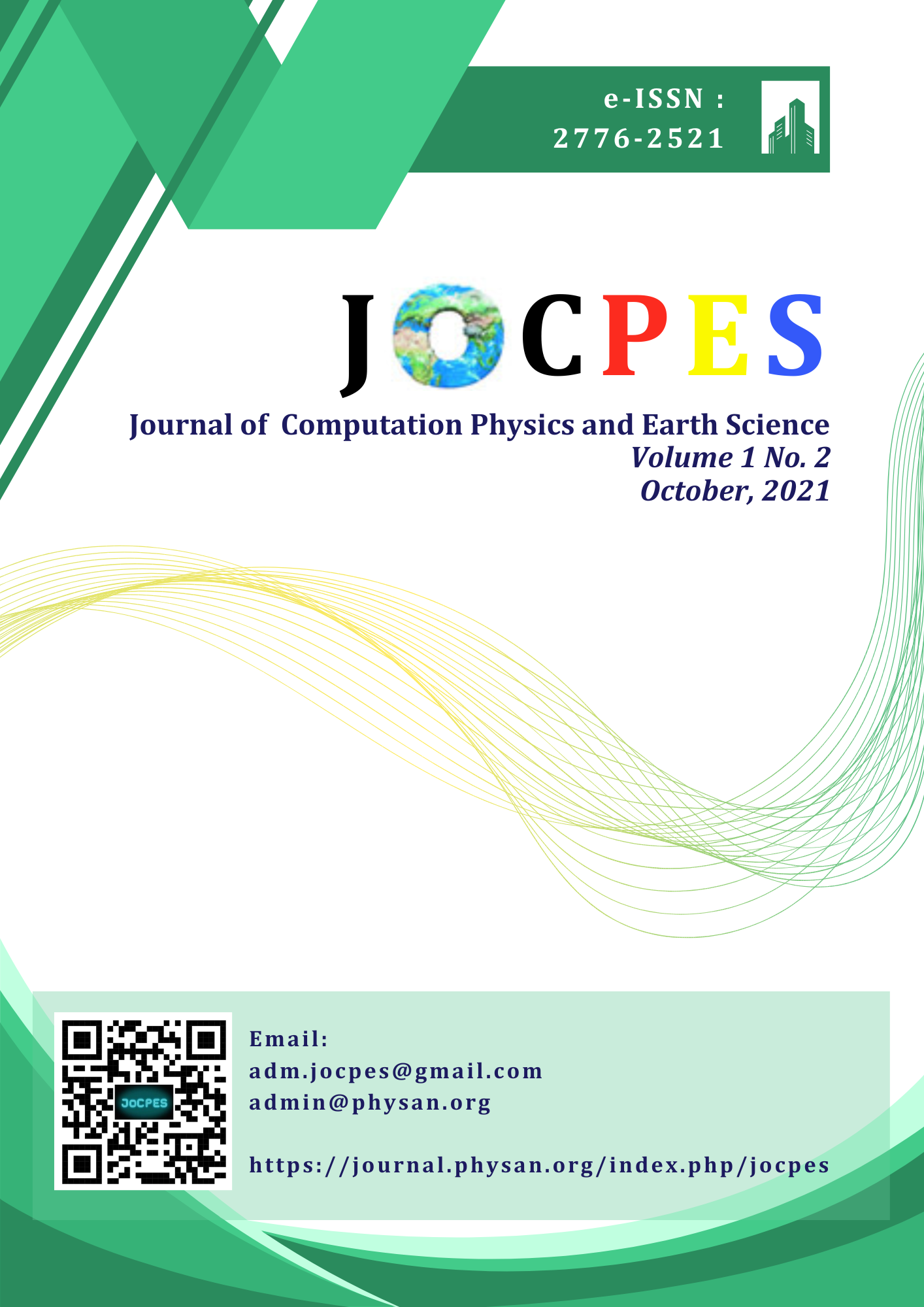Active Tectonic Segmentation on the Micro Plate of Northern Sumatra Based on Distribution of Earthquake Epicenter in July 2020
Main Article Content
Abstract
The main goal of this study to increase awareness of earthquake activity due to local faults that have so far received "less attention". Continuous observations can be made on site (on active faults), by using portable seismographs and/or by utilizing the Indonesia Tsunami Early Warning System (Ina-TEWS) network broadband sensors adjacent to these active faults. However, observing using a Portable Seismograph for a long period of time will certainly require a large amount of money. Therefore, it will be more effective to utilize data from seismic sensors that are relatively close to the suspected faults. Based on the analysis that has been carried out, it can be concluded that, in the period from July 1, 2020 to July 31, 2020, there have been 79 earthquakes in the North Sumatra region, with magnitudes between 2.0 – 5.2. The location of the earthquake was dominated by land earthquakes with shallow depths, namely 0-60 km with 54 events and at sea 25 occurrences. The most earthquake occurrences in the period 01 July 2020 - 31 July 2020 occurred around Cluster 1 (local fault Aceh Central, Batee-A, Aceh South, Pidie Jaya and Lot Aceh North, Seulimeum-South), namely 15 earthquake events, so it is classified as a cluster. which is very active in the July 2020 period. In the July 2020 period, seismic activity around the Tripa 2 and Oreng local faults was low compared to other local faults in Northern Sumatra, while in June 2020 there was no seismic activity around the Tripa local faults. 2, and the Oreng fault.
Downloads
References
L. Prawirodirdjo et al., “One century of tectonic deformation along the Sumatran fault from triangulation and Global Positioning System surveys,” J. Geophys. Res. Solid Earth, vol. 105, no. B12, pp. 28343–28361, 2000, doi: 10.1029/2000jb900150.
C. Subarya et al., “Plate-boundary deformation associated with the great Sumatra-Andaman earthquake,” Nature, vol. 440, no. 7080, pp. 46–51, 2006, doi: 10.1038/nature04522.
R. W. Briggs et al., “Deformation and slip along the Sunda megathrust in the great 2005 Nias-Simeulue earthquake,” Science (80-. )., vol. 311, no. 5769, pp. 1897–1901, 2006, doi: 10.1126/science.1122602.
N. Earthquake et al., “Deformation and Slip Along the,” Science (80-. )., vol. 311, no. March, pp. 1897–1901, 2006, doi: 10.1126/science.1122602.
P. W. Burton and T. R. Hall, “Segmentation of the Sumatran fault,” Geophys. Res. Lett., vol. 41, no. 12, pp. 4149–4158, 2014, doi: 10.1002/2014GL060242.
Sinambela, “Wajah Tektonik Sumatera Bagian Utara,” https://books.google.co.id/books/about?id=yyPsDwAAQBAJ&redir_esc=y, 2020.
D. H. NATAWIDJAJA and W. TRIYOSO, “the Sumatran Fault Zone — From Source To Hazard,” J. Earthq. Tsunami, vol. 01, no. 01, pp. 21–47, 2007, doi: 10.1142/s1793431107000031.
H. A. Haridhi, B. S. Huang, K. L. Wen, D. Denzema, R. Agung Prasetyo, and C. S. Lee, “A study of large earthquake sequences in the Sumatra subduction zone and its possible implications,” Terr. Atmos. Ocean. Sci., vol. 29, no. 6, pp. 635–652, 2018, doi: 10.3319/TAO.2018.08.22.01.
M. Simoes, J. P. Avouac, R. Cattin, and P. Henry, “The Sumatra subduction zone: A case for a locked fault zone extending into the mantle,” J. Geophys. Res. Solid Earth, vol. 109, no. 10, 2004, doi: 10.1029/2003JB002958.
M. Sinambela, M. Situmorang, K. Tarigan, S. Humaidi, and M. Sirait, “Waveforms Classification of Northern Sumatera Earthquakes for New Mini Region Stations Using Support Vector Machine,” Int. J. Adv. Sci. Eng. Inf. Technol., vol. 11, no. 2, pp. 489–494, 2021, doi: 10.18517/ijaseit.11.2.12503.
E. Darnila, K. Tarigan, Sunardi, F. G. Nafiri Larosa, and M. Sinambela, “Cluster analysis and seismicity partioning for northern sumatera using machine learning approach,” J. Theor. Appl. Inf. Technol., vol. 99, no. 2, pp. 370–380, 2021.

